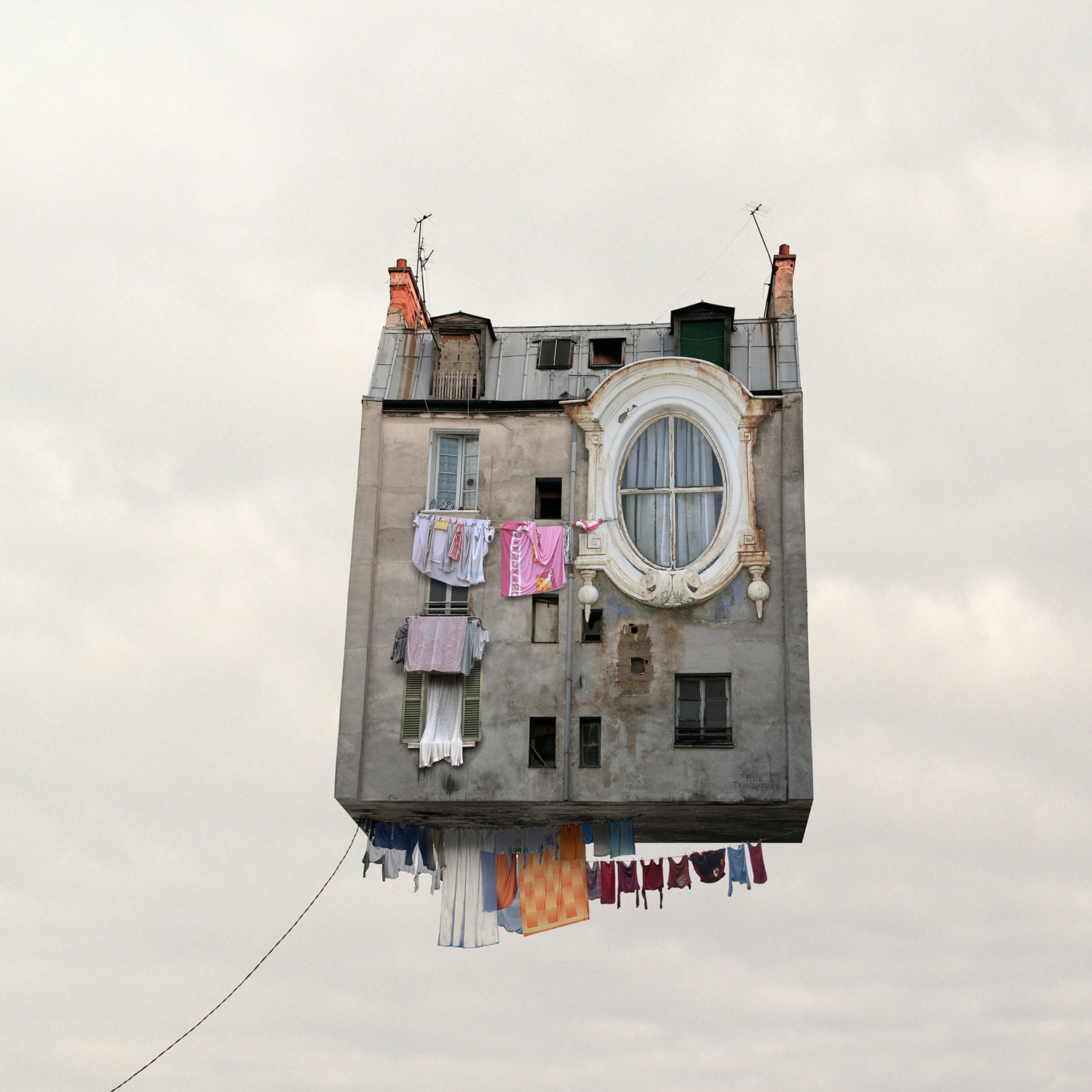
Inspired by the 1956 short French children’s film Le Ballon Rouge, or The Red Balloon, Laurent Chéhère’s part analog, part digital images of floating houses are at once a charming, imaginative take on Paris, and also a wistful vision of dreams deferred. The work will be shown from Oct. 25 to Dec. 8 at Galerie Paris-Beijing in Paris.
Before transitioning to photography, Chéhère was an art director at a French advertising agency. He first saw Le Ballon Rouge when he was young, and upon revisiting it recently, described it as a “merveille [wonder] of poetry.” In 1960, TIME Magazine named its director, Albert Lamorisse, “probably the most original moviemaker in France.”
The film stars the director’s 6-year-old son Pascal as an inquisitive, adventurous Parisian tot who discovers a bright red balloon in the street one day. Lamorisse’s Paris is a city drained of color, still suffering from the fallout of the war, populated by stern grownups and bullying children. It is against this surprisingly grim backdrop that our story takes place. The boy discovers that the balloon is not simply a shiny, bouncy thing to be led about on a string but rather a living, expressive, mischievous character unto itself. Without the use of CGI, the director is able to coax an amazing performance out of latex and helium, and the boy and the balloon become fast friends. Ultimately, the adventure story that ensues is an ode to possibility, dreams and escape.
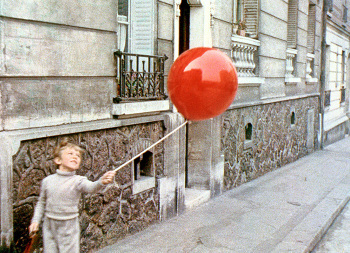
Chéhère’s world has a similar color palette of greys, blues and browns. And it too shares a dose of the fantastical: the main characters—in this case buildings he digitally constructed from architectural details photographed around Paris—appear to float in the sky. But something is different. Unlike the playful balloon with its dancing string, these floating objects appear settled, as if stasis has overtaken them and age has crept in.
Notes from workaday life appear throughout the photo series—television antennae, “For Sale” signs, McDonald’s and graffiti. Laundry appears in two of the nine images. Chéhère, who turned 40 this year, has replaced the balloon’s dancing string with electrical wires, which both sustain the houses and also tie them in place. The one exception is a grim, grey-blue brick house with prison-like windows. Here, the wires have snapped, a fire rages in the second story, the inhabitants’ escape ladder has broken and tumbles out of the frame. Resting by the window, silhouetted by the blaze, is a birdcage, about to be engulfed in flames.
Albert Lamorisse’s film has a happy ending; the ending of Chéhère’s meditation on middle-age life remains uncertain.
Laurent Chéhère is a photographer based in Paris. More of his work is available on his website.
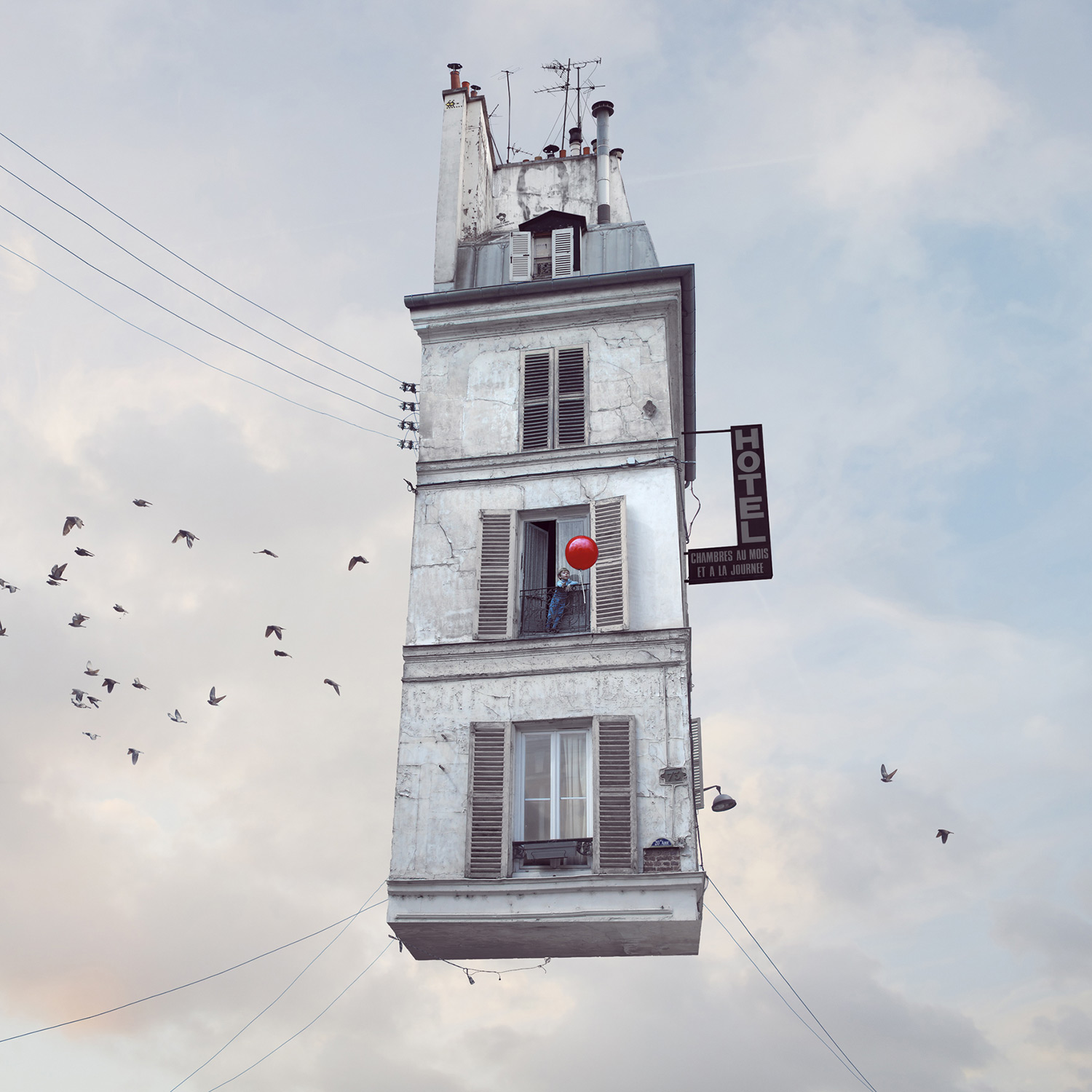
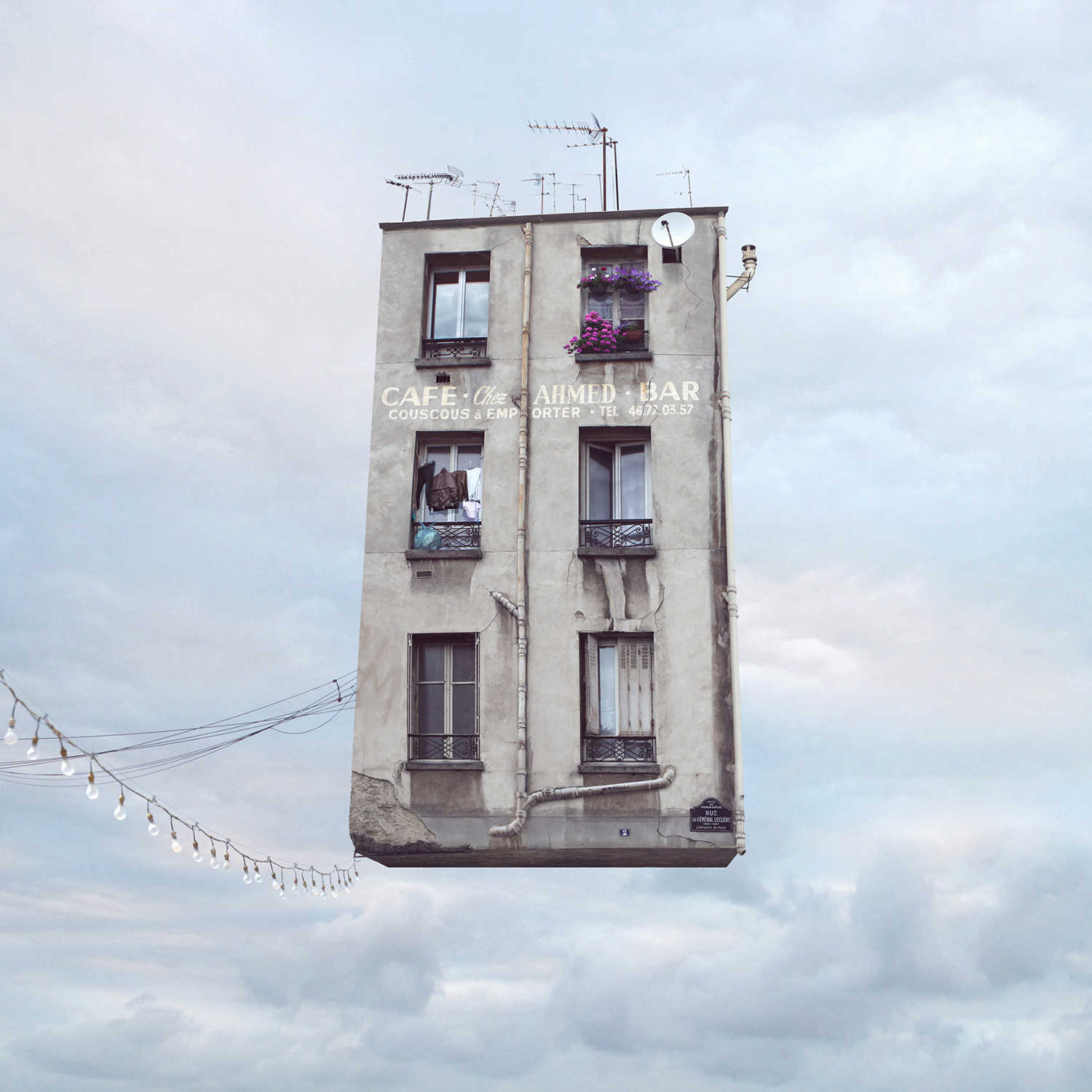
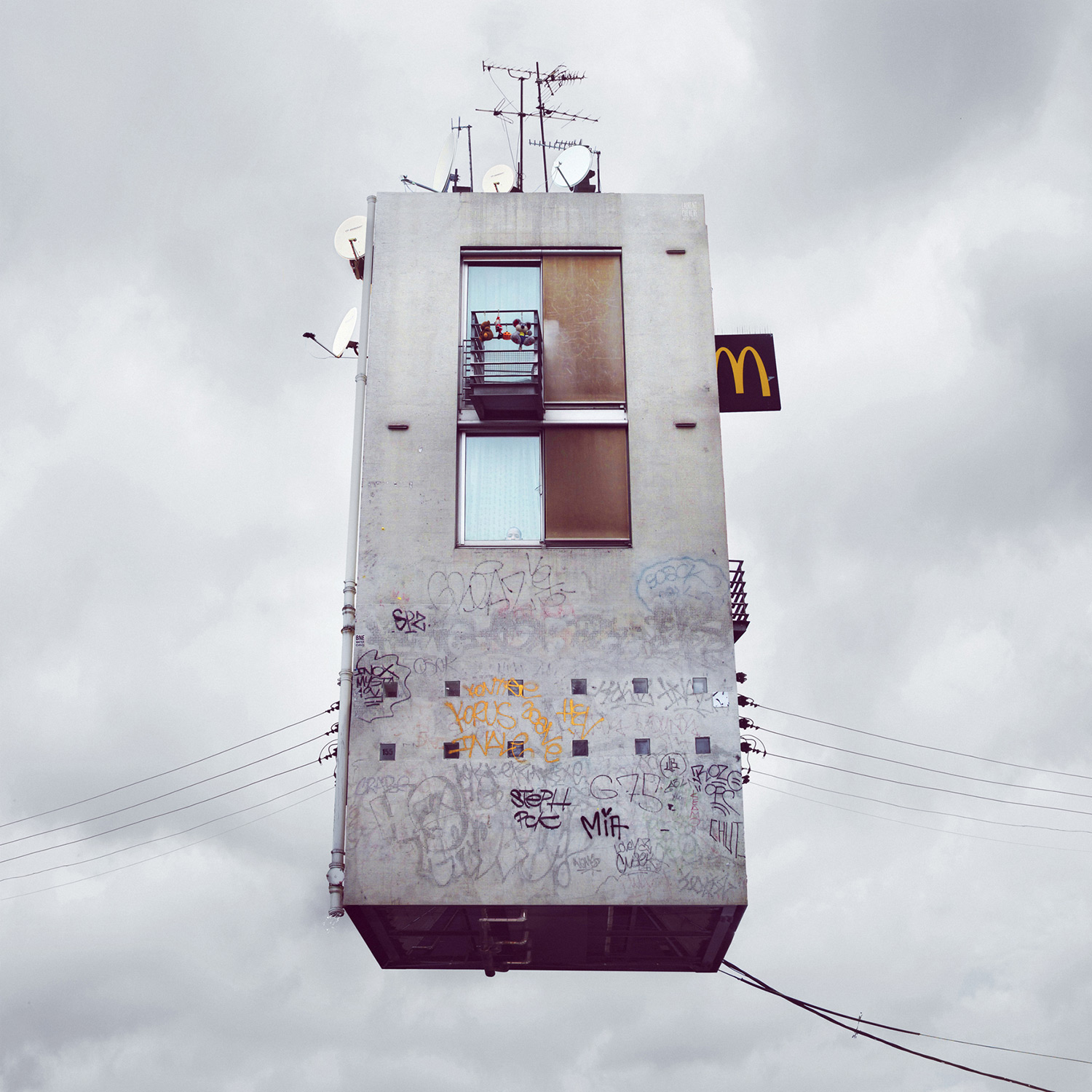
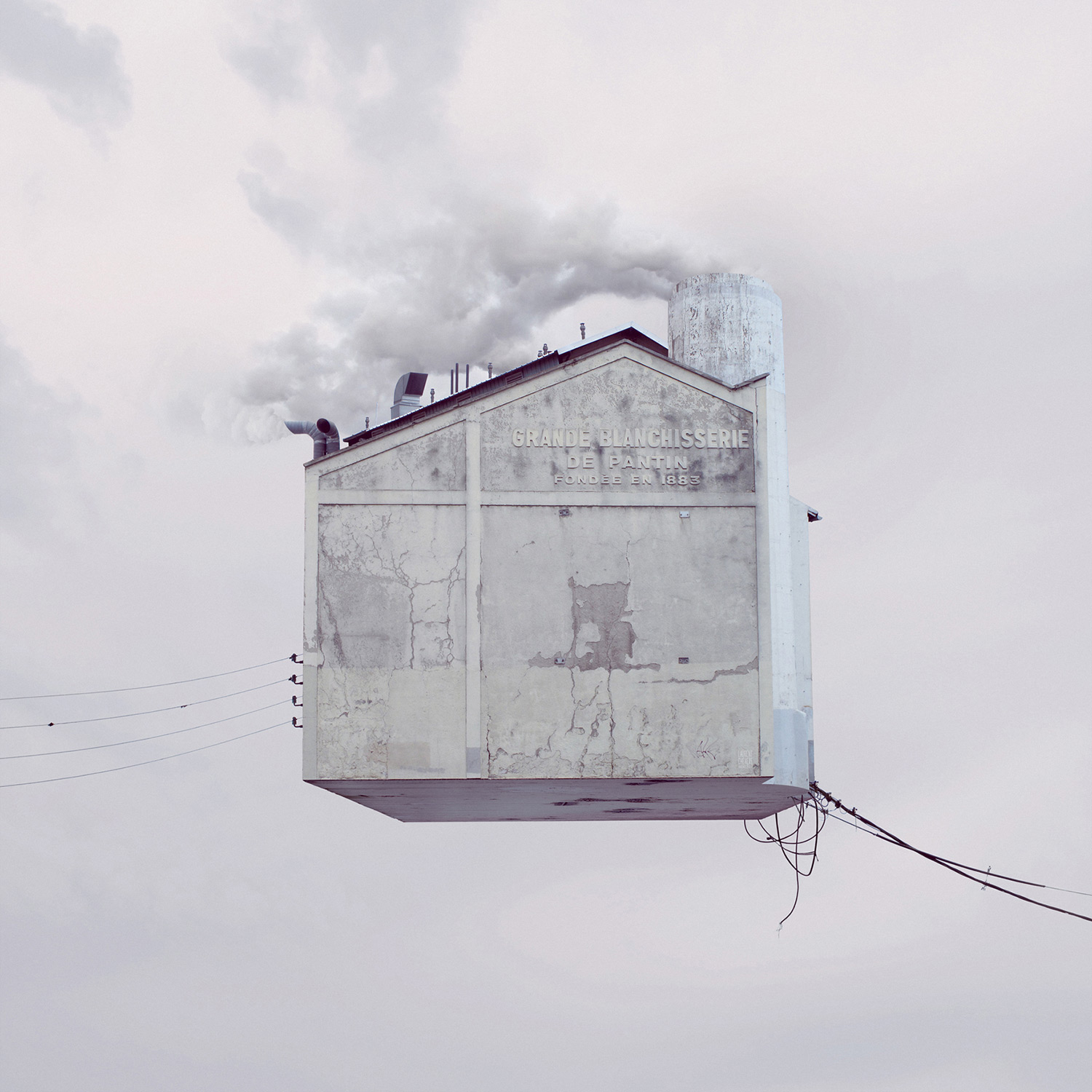
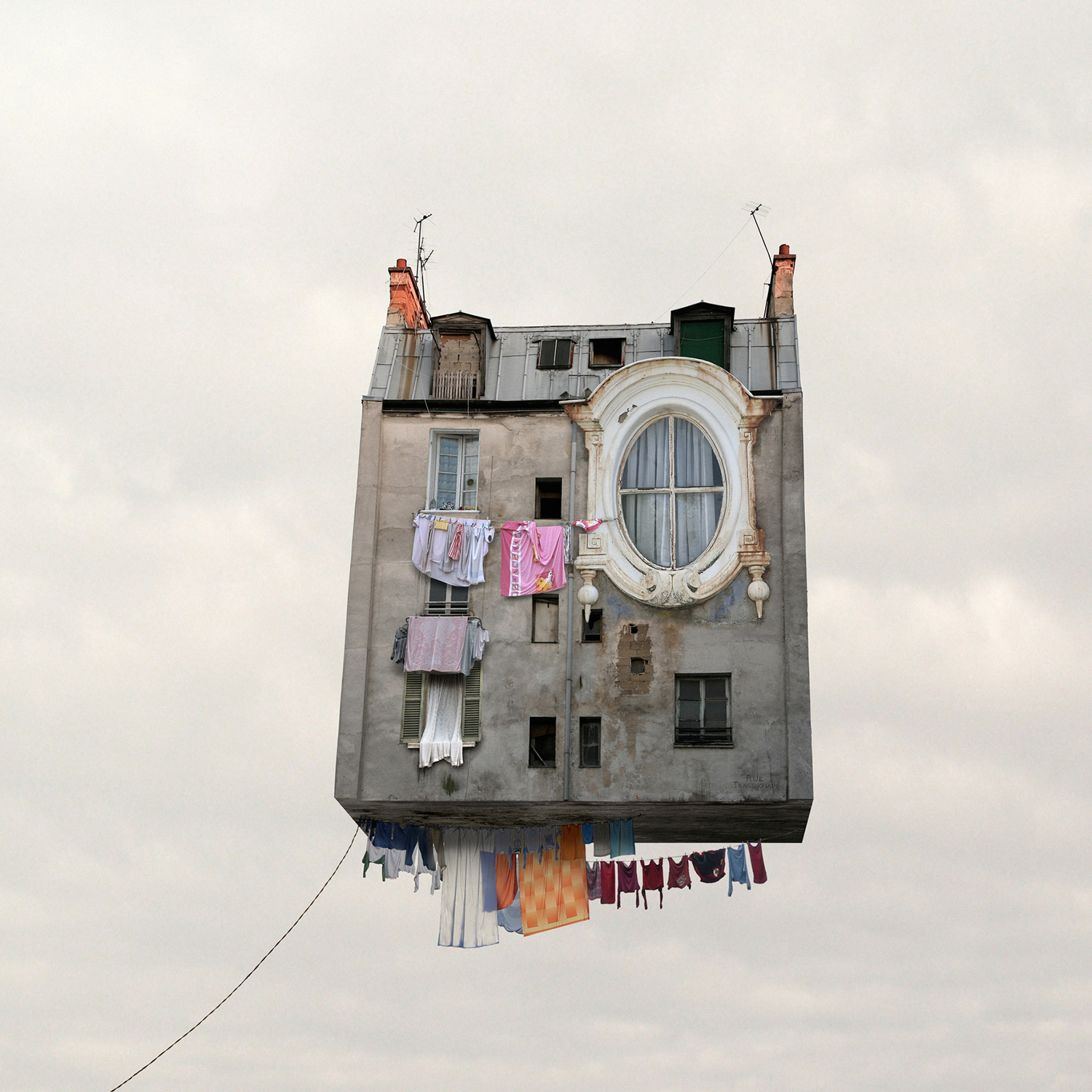
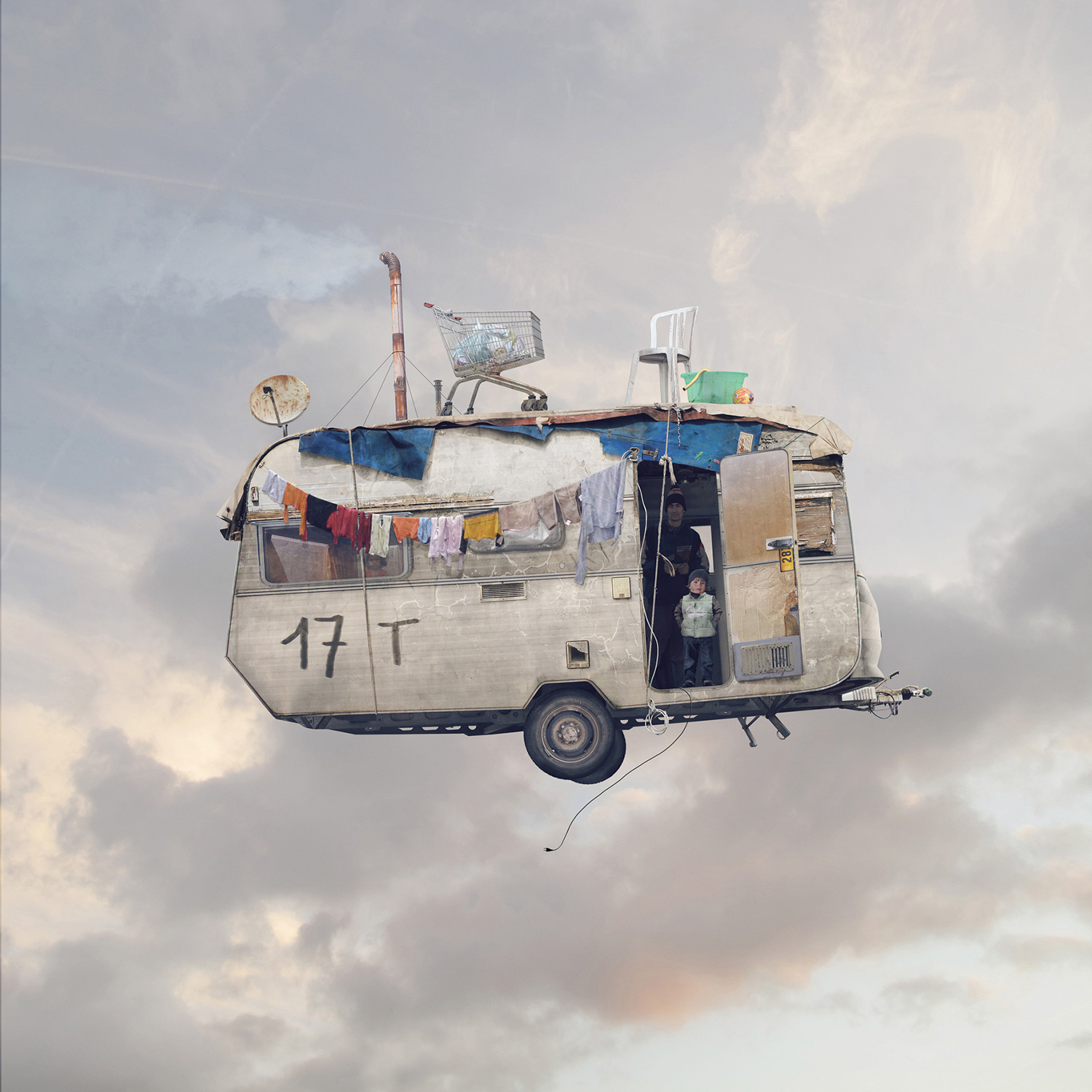
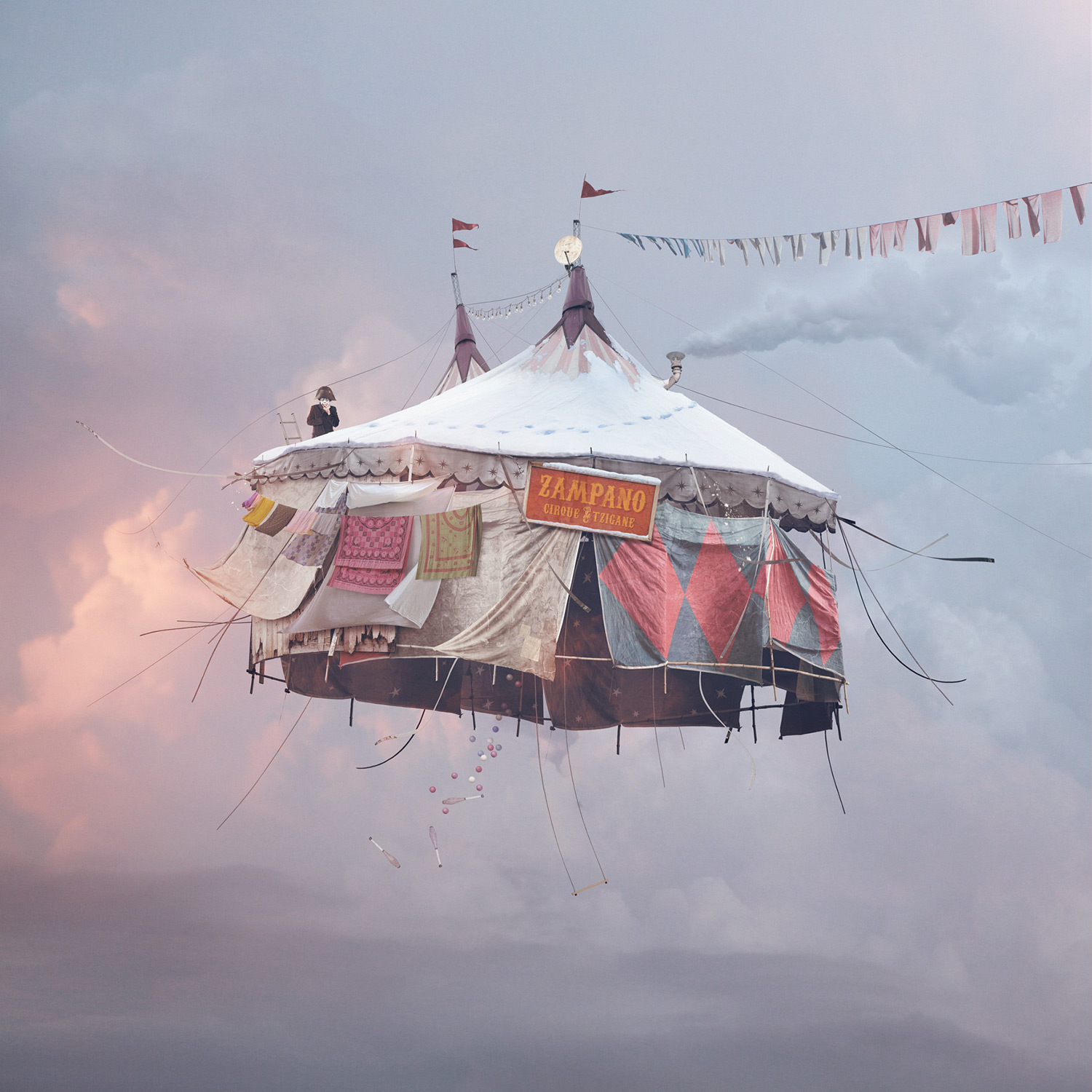
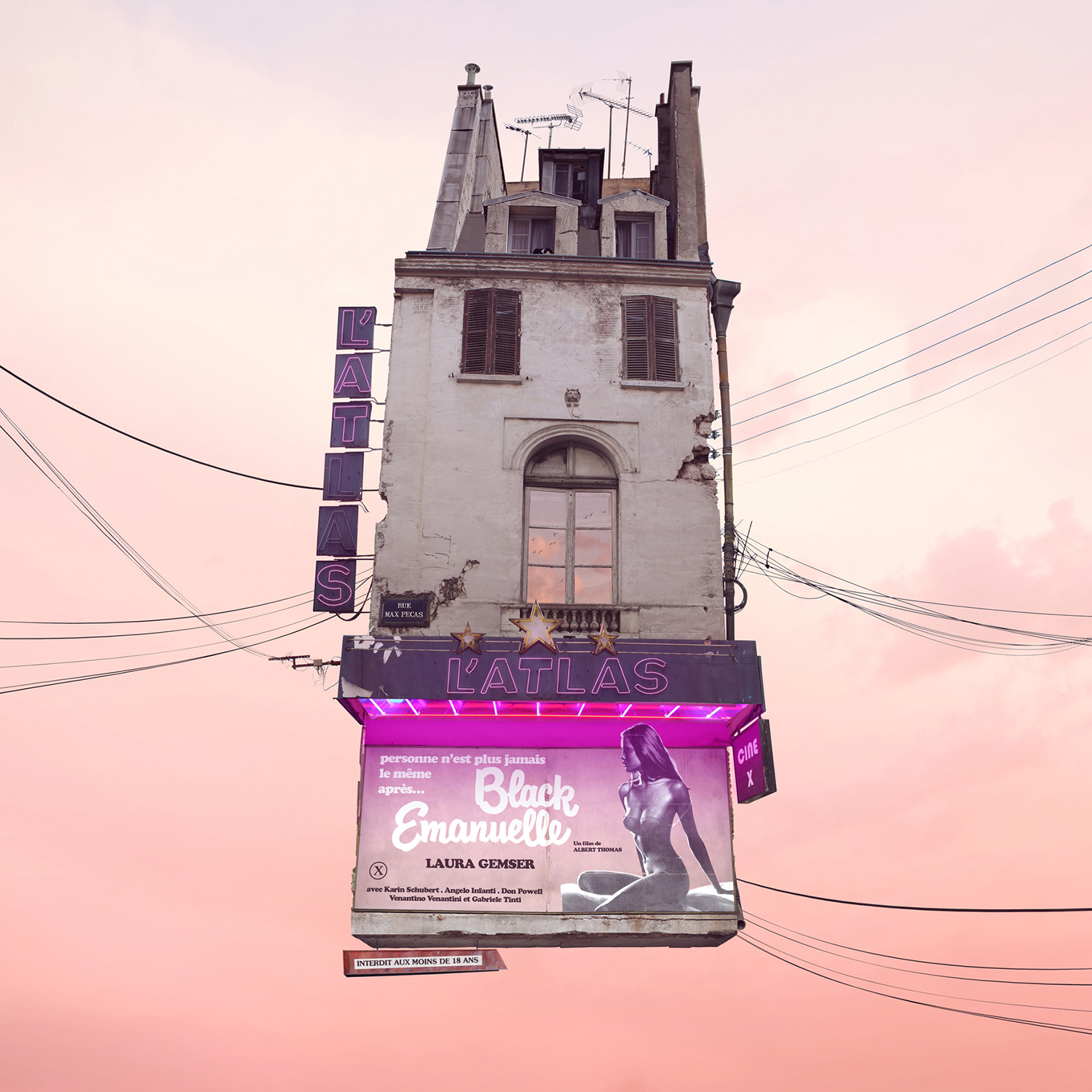
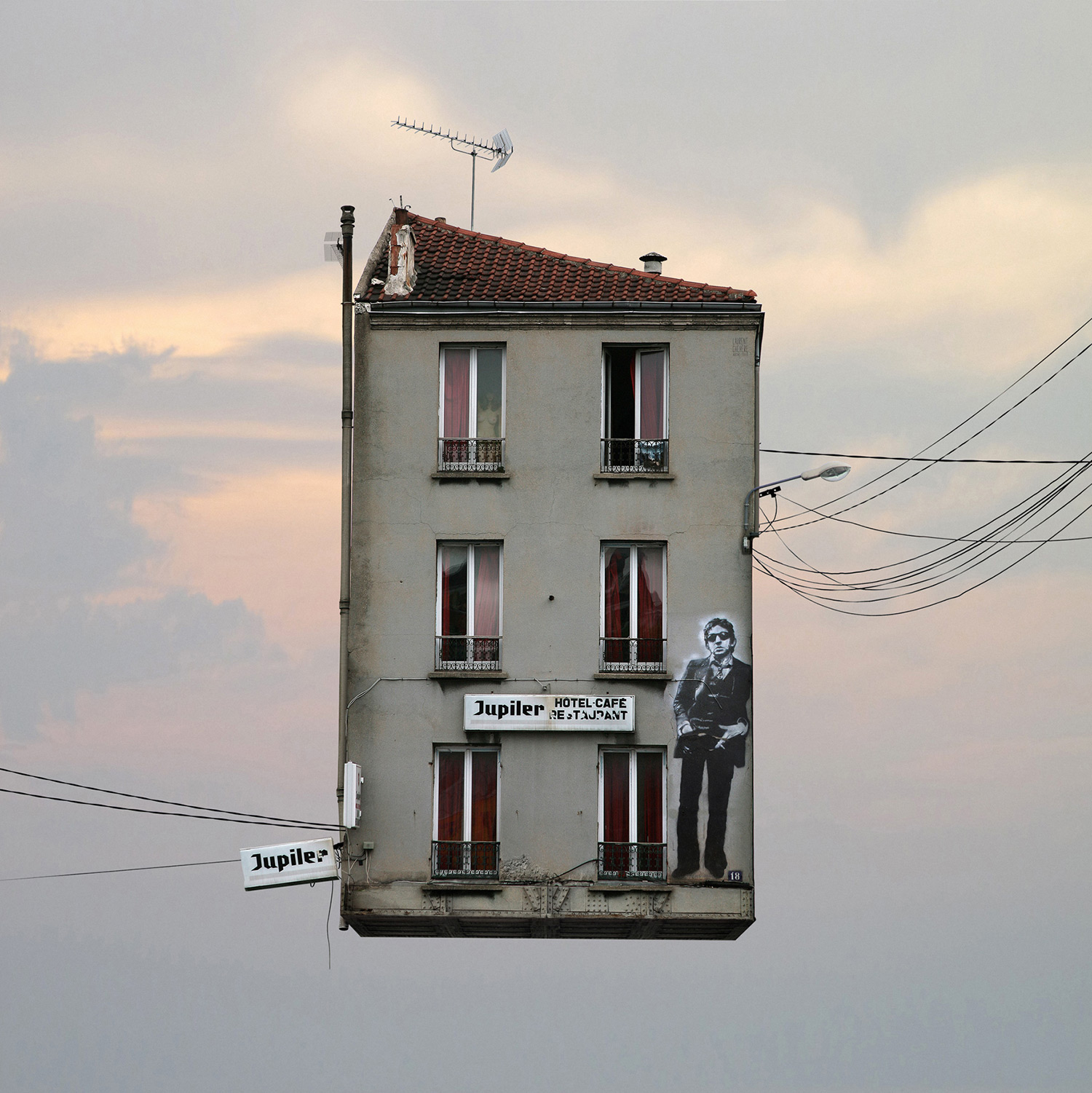
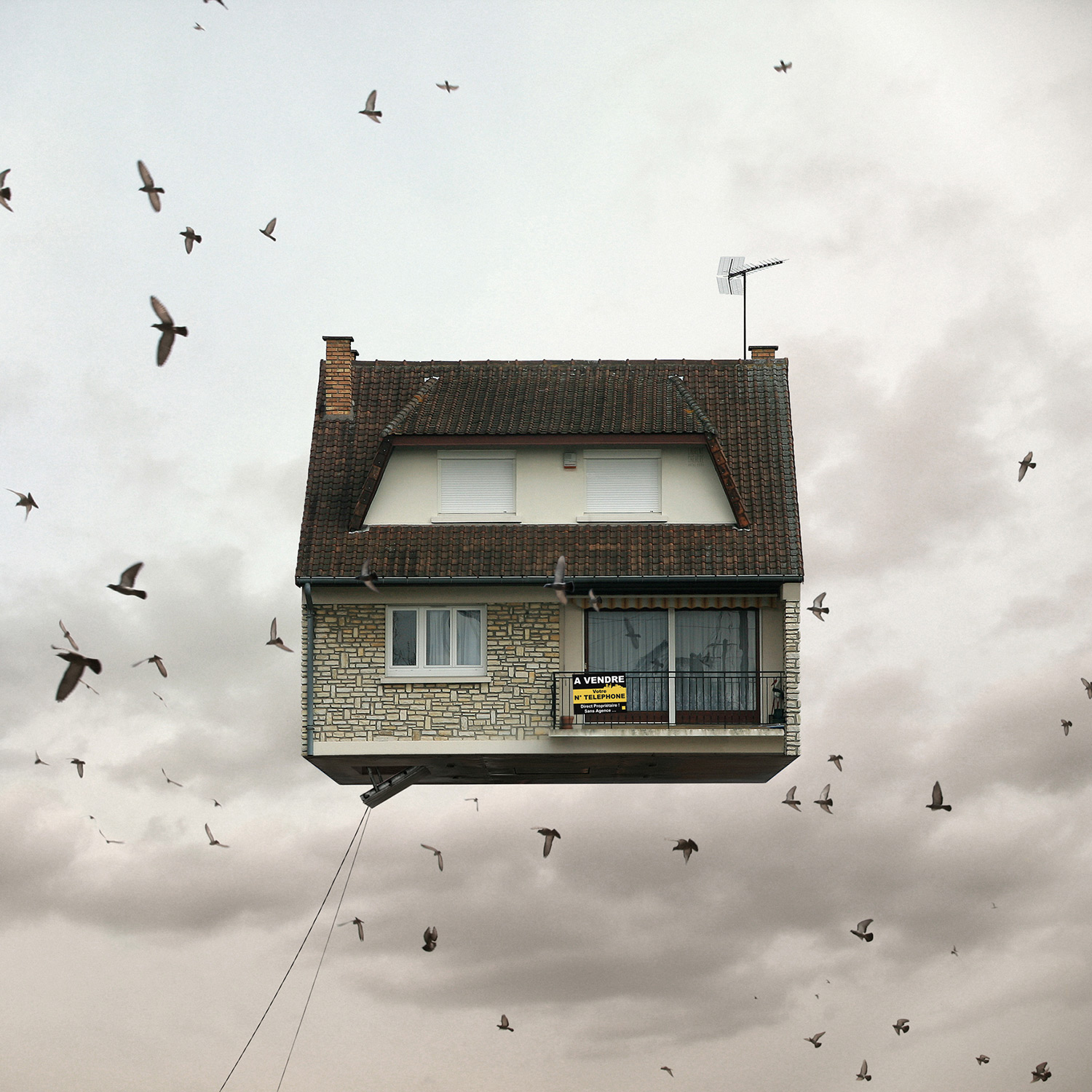
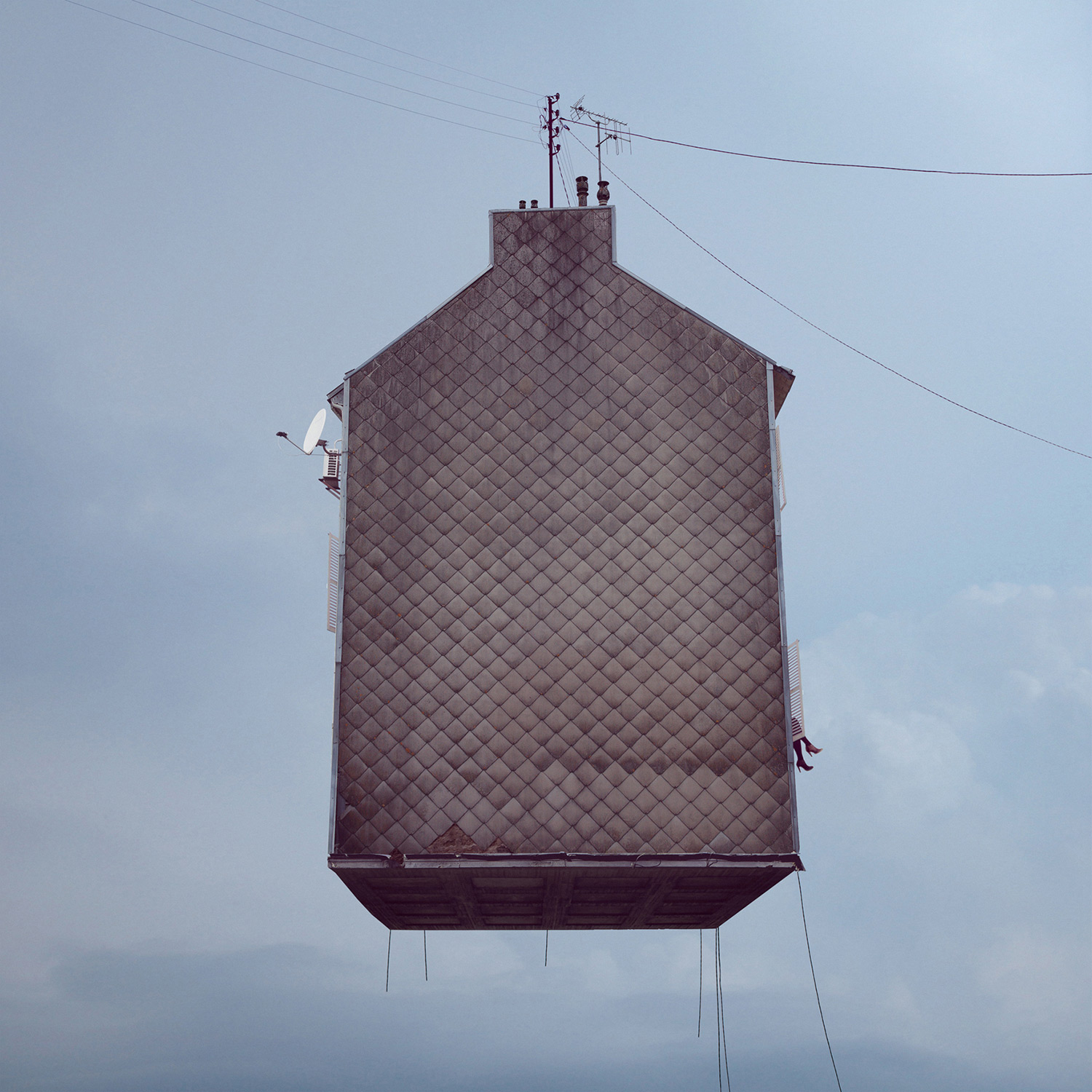
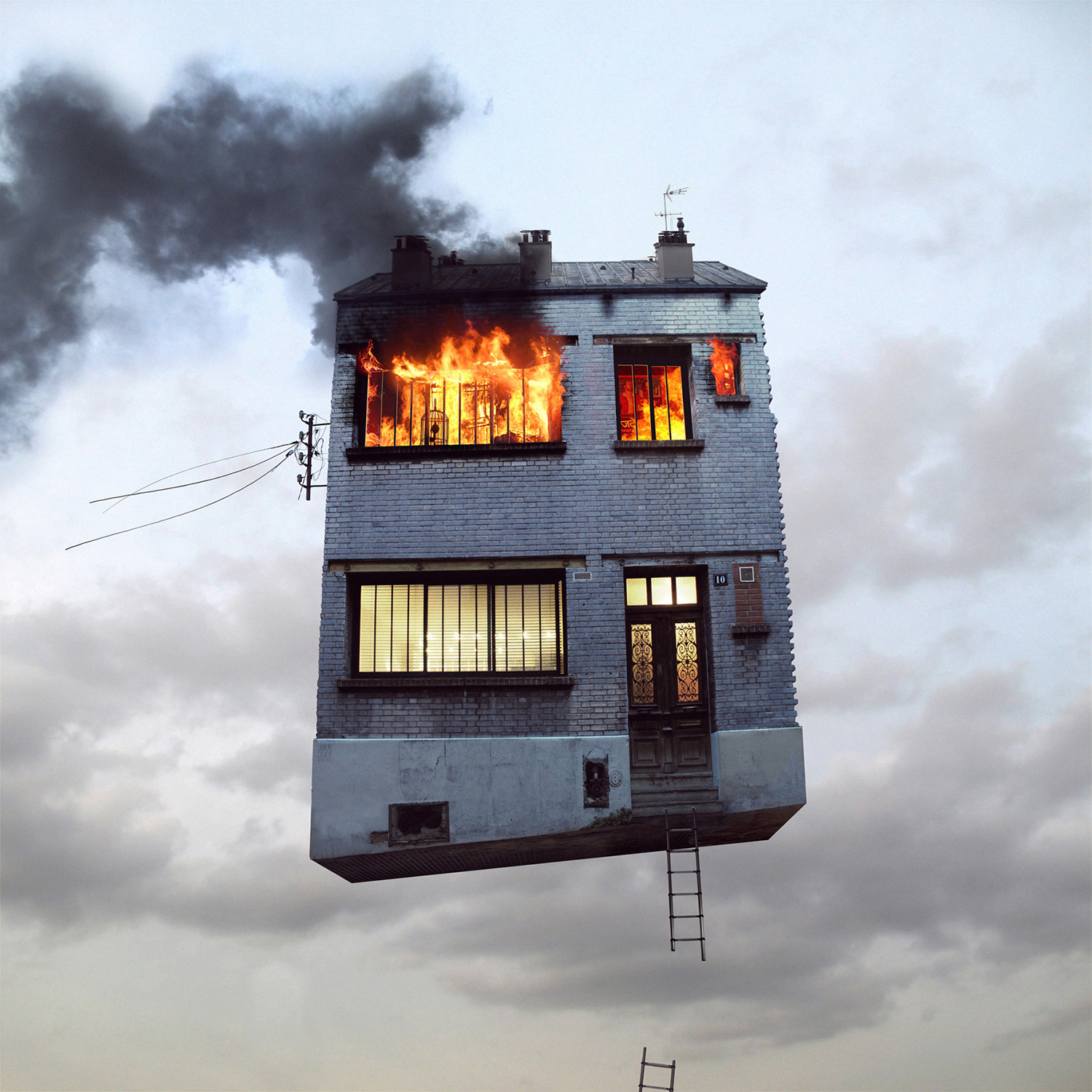
More Must-Reads From TIME
- The 100 Most Influential People of 2024
- Coco Gauff Is Playing for Herself Now
- Scenes From Pro-Palestinian Encampments Across U.S. Universities
- 6 Compliments That Land Every Time
- If You're Dating Right Now , You're Brave: Column
- The AI That Could Heal a Divided Internet
- Fallout Is a Brilliant Model for the Future of Video Game Adaptations
- Want Weekly Recs on What to Watch, Read, and More? Sign Up for Worth Your Time
Contact us at letters@time.com